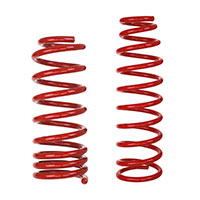The withdrawal of benztropine mesylate in chronic schizophrenic patients
This study, a prospective open study of anticholinergic agent discontinuation, does both. The primary outcome measure was changes in EPS as measured by the Extrapyramidal Symptoms Rating Scale (ESRS) Chouinard and Margolese, 2005. The present study is the first anticholinergic discontinuation study to combine the ESRS and BACS, and the first one to examine EPS and cognition in a North American population. Depression may be caused or aggravated by chronic benzodiazepine use, but is also a feature of the withdrawal syndrome. Depressive symptoms may appear for the first time after withdrawal, sometimes after a delay of a few weeks, and it can be severe and protracted for some months.
Recent Activity
- This section collects any data citations, data availability statements, or supplementary materials included in this article.
- This can be a particularly frustrating symptom to deal with, as it can lead to a vicious cycle of fatigue and anxiety.
- The best resource in your quest to quit benzodiazepines is your prescribing doctor.
- However, there have been no controlled trials and it is not clear whether these drugs themselves cause withdrawal effects.
- Future research may also assess the effect antipsychotic withdrawal symptoms on other parameters such as psychosocial functioning and quality of life.
With slow tapering, some long-term users have virtually lost all their symptoms by the time they take their last tablet, and in the majority symptoms disappear within a few months. Vulnerability to extra stress may last somewhat longer and a severe stress may – temporarily – bring back some symptoms. Symptoms are just symptoms after all and most of them in withdrawal are not signs of illness but signals of recovery. Furthermore, as your mind clears, you can benztropine withdrawal symptoms work out more and more effective ways to deal with them so that they become less significant.
Creative Commons License
Of the complementary medicine techniques, all can help with relaxation during the procedure but the effects tend to be short-lived. There are many non-pharmacological techniques for helping people with anxiety. Some of these are listed below, but it is beyond the scope of this booklet to give details of each technique or to mention all of them.
Inpatient treatment
Taking drug addiction treatment all or most of the dose of benzodiazepine at night during the reduction period may also help. Occasionally another drug might be indicated (see section on adjuvant drugs, below). Chapter I described what benzodiazepines do when they are in the body and how tolerance and dependence develop. Chapter II discussed the need for slow withdrawal and gave practical examples of dosage tapering. This chapter is concerned with what happens as benzodiazepines leave the body in the course of withdrawal and afterwards. The focus is on withdrawal symptoms, and how to cope with them if they occur.
Among people taking benzodiazepines for longer than six months, about 40% experience moderate to severe withdrawal symptoms when they quit suddenly. In addition to these strategies, individuals may also benefit from taking over-the-counter pain relievers such as acetaminophen or ibuprofen. These medications can help to reduce headaches and muscle pain, which are common physical symptoms of benzodiazepine withdrawal. Benzodiazepines, a class of sedative prescription medications, are commonly used to treat conditions such as anxiety, insomnia, seizures, and muscle spasms.
Effects of discontinuation on psychopathology
The square data markers indicate the proportion of individuals with withdrawal symptoms in each study, with sizes reflecting the statistical weight of the study using random-effects meta-analysis of proportions. The blue diamond data marker represents the subtotal and overall proportion and 95% CI. The vertical dashed line shows the overall effect estimate for both target and control together. During benzodiazepine withdrawal, an individual may experience increased anxiety, trouble sleeping, excessive worry, and feeling on edge. They may also experience physical symptoms such as sweating, trembling, and heart palpitations. The symptoms of benzodiazepine withdrawal can vary depending on several factors, including the individual’s history of benzodiazepine use, the dose and duration of use, and the method of discontinuation.
- Included studies on the occurrence of withdrawal symptoms after abrupt antipsychotic discontinuation.
- They seem to be prone to colds, sinusitis, ear infections, cystitis, oral and vaginal thrush (candida), other fungal infections of the skin and nails, cracked lips, mouth ulcers and influenza.
- We performed a systematic review and meta-analysis concerning occurrence of withdrawal symptoms after discontinuation of antipsychotics.
- Alternatively, an antihistamine with sedative effects (e.g. diphenylhydramine Benadryl, promethazine Phenergan) may be used temporarily.
- There is no data on how long benzodiazepines remain in bones, which have a lower fat content but also a slower rate of cell turnover.
Withdrawal is not a problem when small doses are taken for short periods or intermittently. They can be life-saving in status epilepticus (repeated fits, one after another) and in fits caused by overdose of certain drugs (for example, tricyclic antidepressants). However, rapid withdrawal, especially from high potency benzodiazepines, can precipitate epileptic fits as a rebound reaction. Such an occurrence is extremely rare with slowly eliminated benzodiazepines (e.g. diazepam) or with slow dosage tapering.
















